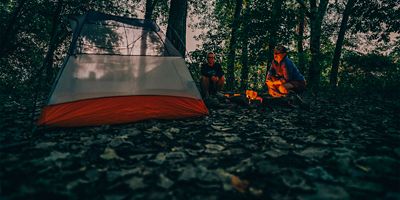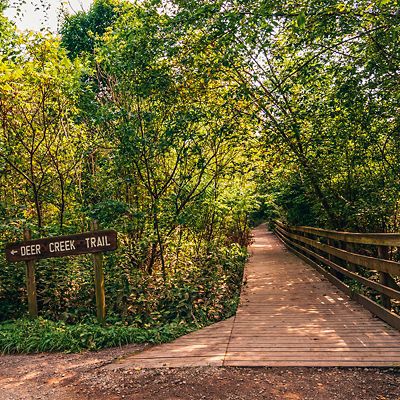
Don’t be surprised if you have a sore neck after a hike through the Forest Cathedral, this state park’s pocket of virgin timber. Some white pines are more than 200 feet tall—who can resist staring upward?
And that’s just the start. Old-growth northern red oak, white oak, black cherry, red maple, sugar maple, American beech, white ash, yellow birch, black birch, and cucumber magnolia also grow here. Many of the trees are more than 150 years old, and the white pines are double that. Considering how much of Pennsylvania has been clear-cut over the decades, Cook Forest is a bit of a miracle.
How was it saved? The Cook family, the first non-native residents of the area, built a thriving timber business after arriving in 1828, and acquired significant land holdings over several generations. In 1927, the state purchased 6,065 acres from the family, protecting the remaining old-growth trees, and the Civilian Conservation Corps built much of the park infrastructure in the 1930s. Today it’s a National Natural Landmark, also known as the Land of the Giants.
The best way to see the big trees is on foot. There are more than 40 miles of hiking trails within the park and even more in adjacent Clarion River Lands. Much of the terrain is hilly, but in return for the effort you’ll find a variety of sights in addition to the forest, including big vistas and rock formations. Want to do more than a day hike? Both the Baker Trail (140 miles) and North Country Trail (4,600 miles) travel through Cook Forest. There are campsites and rustic cabins in the park, along with many private campgrounds and cabin rentals in the area.
The old-growth trees aren’t the only attraction at this 8,500-acre park. The Clarion River runs through Cook Forest, offering excellent swimming, fishing, and boating (boat rentals and shuttles available). So it should come as no surprise that the park can get busy during the summer; still, it rarely sees the crowding that a place like Ohiopyle experiences.






